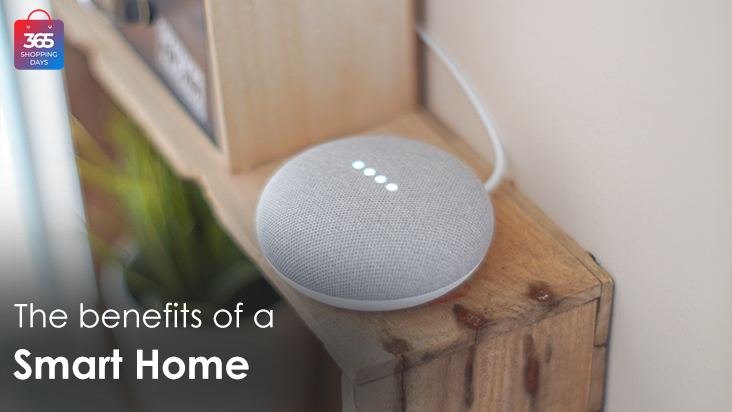Smart homes are becoming more popular as people look for ways to make their lives easier, more convenient, and more efficient.
With the rise of smart devices, it is now possible to automate many tasks around the home, from turning on lights to adjusting the temperature. In this blog post, we will explore the benefits of a smart home and how to set one up.
Let’s get started.

What is a Smart Home?
A smart home is a home that uses internet-connected devices to automate and control various systems, including lighting, heating and cooling, security, and entertainment.
These devices can be controlled using a smartphone, tablet, or voice commands, making it easy to manage your home from anywhere.
Key Benefits of a Smart Home
There are many benefits to having a smart home, including:
1. Increased Convenience
With a smart home, you can control various devices and appliances using your smartphone or voice commands. This means you can turn on/off lights, adjust the temperature, lock/unlock doors, and more, all from the comfort of your couch.
2. Improved Energy Efficiency
Smart homes can help you save money on energy bills by automatically turning off lights and adjusting the temperature when you’re not home. You can also monitor your energy usage and identify areas where you can cut back.
3. Enhanced Security
Smart homes offer advanced security features such as smart locks, security cameras, and motion sensors to help deter burglars and keep your home safe.
4. Peace of Mind
With a smart home, you can remotely monitor your home and receive alerts for any issues. This can give you peace of mind when you’re away from home.
5. Increased Accessibility
Smart homes can particularly benefit elderly or disabled individuals struggling with traditional home systems. With voice commands or automated features, they can control various devices and appliances without physically operating them.
How to Set Up a Smart Home?
1. Choose your smart home platform
Smart home platforms like Amazon Alexa, Google Home, and Apple HomeKit are the central control systems for your smart home. Choose one that suits your needs and budget.
2. Select your smart devices
Once you’ve chosen your platform, select the smart devices you want to use in your home. Examples include smart thermostats, smart lighting, and smart locks.
3. Install your devices
Follow the manufacturer’s instructions to install and set up your smart devices. This may involve connecting them to your Wi-Fi network and configuring settings using the platform app.
4. Connect your devices to your platform
Once your devices are installed, you must connect them to your smart home platform. This will allow you to control them using voice commands or the platform app.
5. Create routines and automation
With your devices connected to the platform, you can create routines and automation to simplify your life. For example, you can set your lights to turn on automatically when you arrive home.
Once everything is set up, enjoy a smart home’s convenience and energy savings. You can control your devices from anywhere using your smartphone or voice commands, and you’ll never have to worry about leaving lights or appliances on when you’re not home.
Conclusion
A smart home can make your life easier, more convenient, and more efficient. With the wide range of smart devices available on the market, it is now easier to set up your home automation system.
By automating tasks and controlling your home from anywhere, you can save time, money, and energy while enjoying the benefits of a smart home. Hopefully, you will find this guide helpful.



